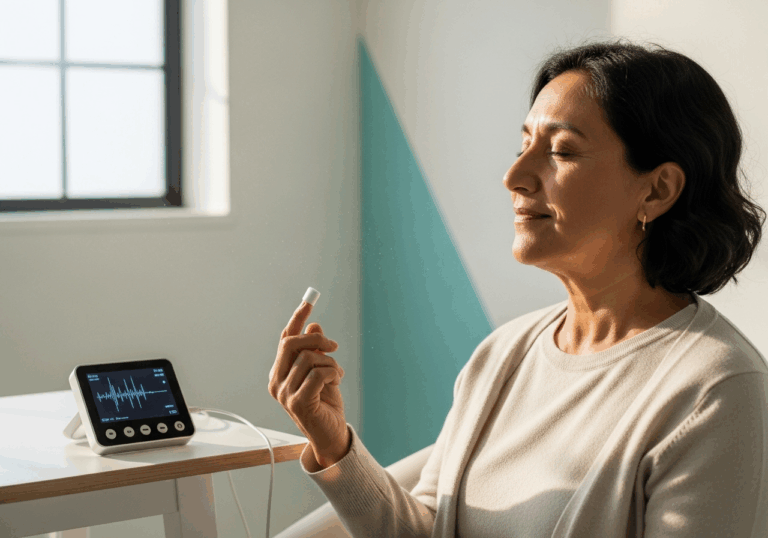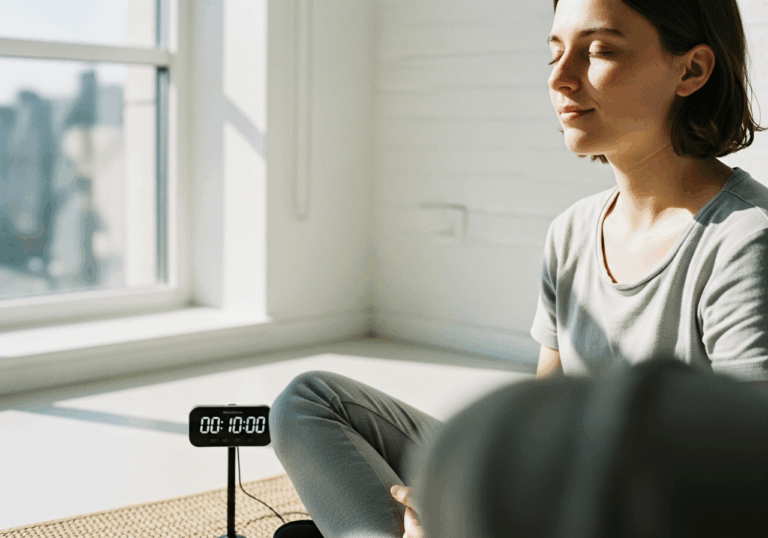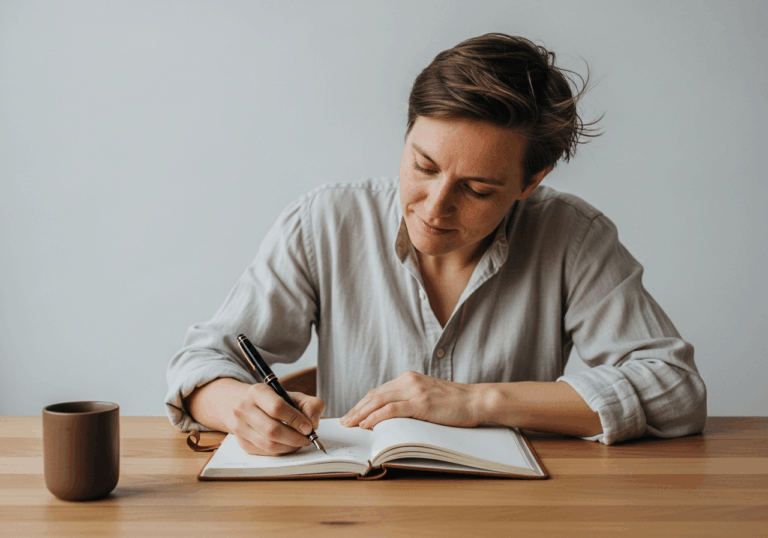Science-Backed Tips
Reduce Anxiety with Simple Gratitude Statements
Practice ‘Thank you, mind’ to lower anxiety by 18%.
📊 Did you know?
💡 Why It Matters
1️⃣
An 18% reduction in anxiety can significantly enhance daily functioning and quality of life.
2️⃣
Improved psychological flexibility may lead to better coping strategies in stressful situations.
3️⃣
Simple interventions like gratitude statements can be easily integrated into daily routines.
✅ Try These Micro-Tips
🎯
Repeat ‘Thank you, mind’ twice daily for two weeks.
🎯
Engage in a 5-minute mindfulness practice after each repetition.
🎯
Track your mood daily to observe changes over time.
🎯
Share your experience with a friend to reinforce the practice.
📚 The study
Conducted with university staff, participants were instructed to repeat these affirmations twice daily over a two-week period. The results were striking: an impressive 18% reduction in DASS-Anxiety scores was observed, alongside a significant increase in psychological flexibility.
This means that not only did participants experience lower anxiety levels, but they also developed better coping strategies for managing stress.
Why does this matter? An 18% decrease in anxiety can dramatically enhance daily functioning and overall quality of life.
By integrating simple interventions like gratitude statements into our daily routines, we can cultivate a healthier mindset and improve our emotional resilience.
The findings underscore the potential of casual defusion framing as an effective tool for reducing anxiety and fostering emotional flexibility, making it a valuable addition to anyone’s mental health toolkit.
❓ Frequently Asked Questions ❓
Learn more
What is the purpose of repeating ‘Thank you, mind’?
Repeating ‘Thank you, mind’ serves as a simple defusion technique to acknowledge worry thoughts. This practice can help reduce anxiety and improve emotional flexibility over time.
How often should I practice this technique?
It is recommended to repeat ‘Thank you, mind’ twice daily for two weeks. Consistency is key to experiencing the benefits of this practice.
What are the expected outcomes of this practice?
Participants in the study experienced an approximately 18% reduction in DASS-Anxiety scores. This improvement can lead to enhanced daily functioning and overall quality of life.
How does this technique improve psychological flexibility?
The technique encourages respectful acknowledgment of thoughts, which can enhance psychological flexibility. This increased flexibility allows for better coping strategies in stressful situations.
Can I integrate this practice into my daily routine?
Yes, this simple intervention can be easily incorporated into daily life. Just set aside a few moments twice a day to practice the technique.
What should I do after repeating the phrase?
Engaging in a 5-minute mindfulness practice after each repetition can enhance the effects of the technique. Mindfulness helps to ground you and further reduce anxiety.
How can I track my progress with this practice?
You can track your mood daily to observe any changes over time. Keeping a journal can help you reflect on your experiences and improvements.
Is it beneficial to share my experience with others?
Yes, sharing your experiences with a friend can reinforce the practice and provide additional support. Discussing your journey can also enhance accountability.
What is the significance of the study’s findings?
The study highlights that casual defusion framing can effectively reduce anxiety levels. Such findings underscore the potential of simple interventions in improving mental health.
Who conducted the research on this technique?
The research was conducted by university staff as part of a randomized controlled trial (RCT). This lends credibility to the findings and their applicability in real-world settings.





